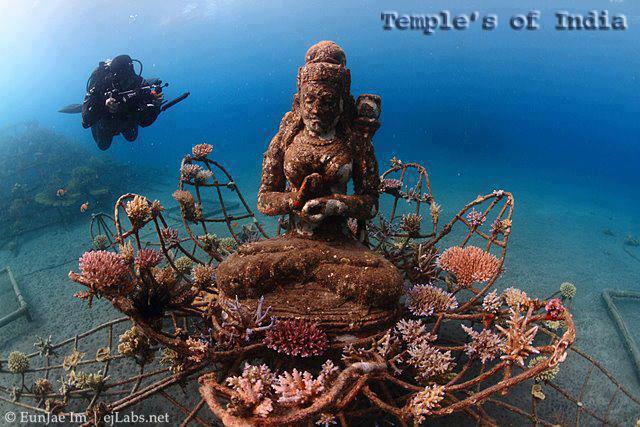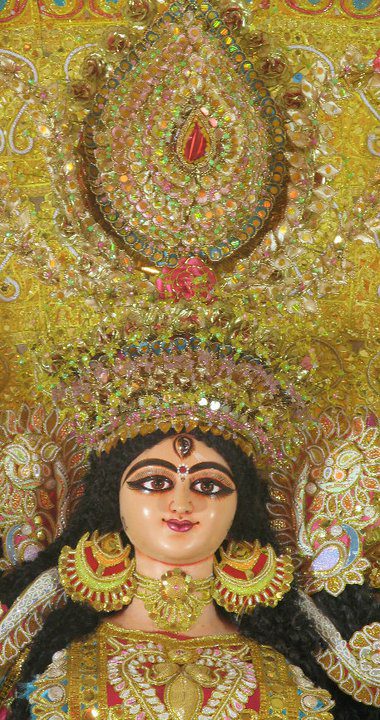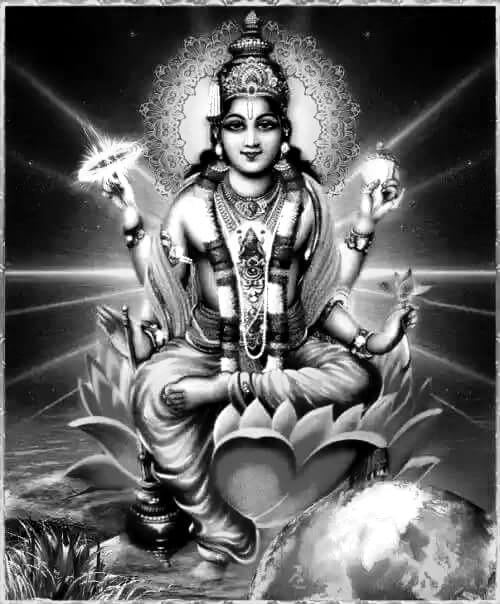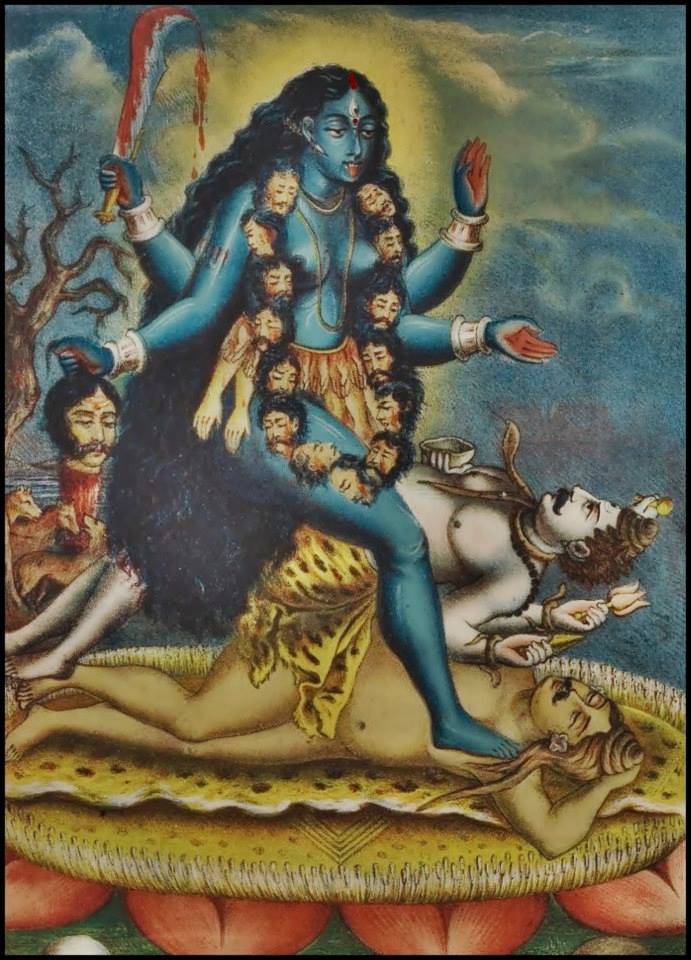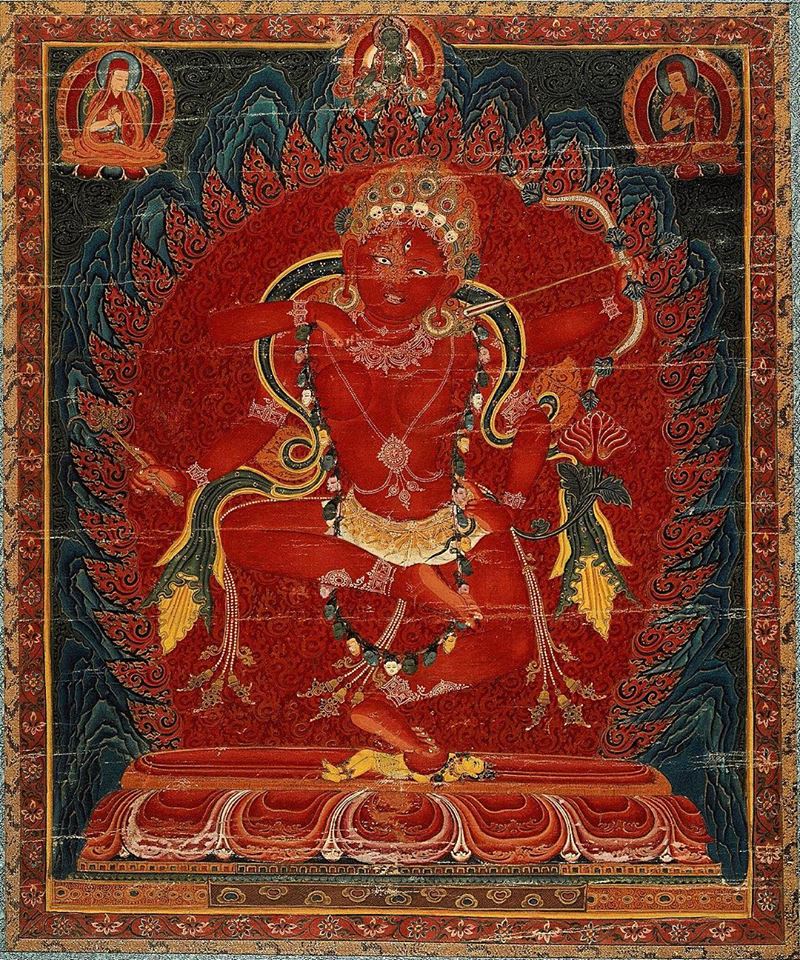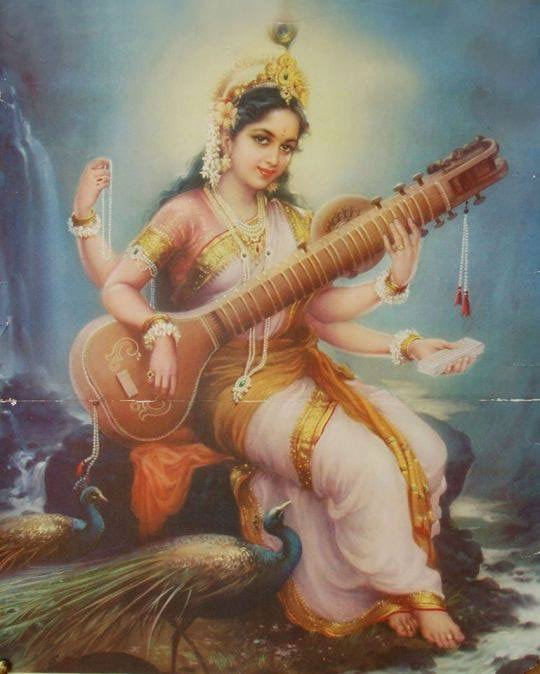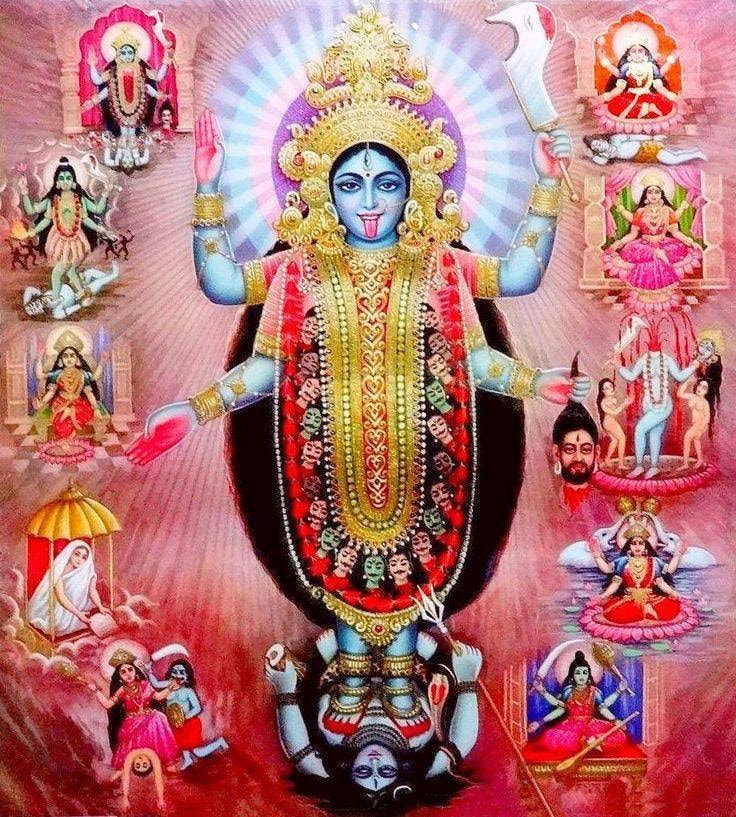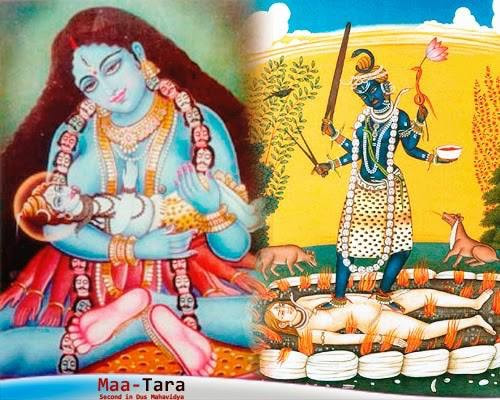
In Hinduism, the goddess Tara (Bengali:দেবী তারা মা )(Sanskrit: Tārā, Devanagari: तारा) meaning "star" is the second of the Dasa (ten) Mahavidyas or "Great Wisdom [goddesses]", Tantric manifestations of Mahadevi, Kali, or Parvati. As the star is seen as a beautiful but perpetually self-combusting thing, so Tara is perceived at core as the absolute, unquenchable hunger that propels all life.
Origin
The oral tradition gives an origin to the goddess Tara. The legend begins with the churning of the ocean between the Devas and Asuras. Lord Shiva drank the poison (Halahala) that was created from the churning of the ocean (in the process turning his throat blue and earning him the epithet Nilakantha), thus saving the world from destruction, but fell unconscious under its powerful effect. Tara Ma appeared and took Shiva on her lap. She suckled him, the milk from her breasts counteracting the poison, and he recovered. This story is reminiscent of the one in which Shiva stops the rampaging Kali by becoming an infant. Seeing the child, Kali's maternal instinct comes to the fore, and she becomes quiet and nurses the infant Shiva. In both cases, Shiva assumes the position of an infant vis-à-vis the Goddess.
Iconography
The similarities in appearances between Kali and Tara are striking and unmistakable. They both are described as standing upon a supine Shiva in inert or corpse like form. However, while Kali is described as black, Tara is described as blue. Both wear minimal clothing, however Tara wears a tiger skin skirt, while Kali wears only a girdle of severed human arms. Both wear a necklace of severed human heads and the previously mentioned girdle of arms. Both have a lolling tongue, and blood oozes from their mouths. Their appearances are so strikingly similar that it is easy to mistake one for the other. Indeed, they are often said to be manifestations of each other; for example, in their thousand-name hymns they share many epithets as well as having each others names. Tara, for example, is called Kalika, Ugra-kali, Mahakali, and Bhadra-kali. Tara is said to be more approachable to the devotee (Bhakta) or Tantrika because of her maternal instincts; however a large population of Bengali Hindus approach Kali herself as "Ma" or "mother".
Tara
Like Kali, furthermore, Tara in her Hindu context enjoys blood. In her hymn of a hundred names from the Mundamala-tantra, she is called "She Who Likes Blood", "She Who Is Smeared with Blood" and "She Who Enjoys Blood Sacrifice". The Tara-tantra describes Tara's delight in both animal and human blood but says that the latter is more pleasing to her. The blood of devotees is to be taken from specified parts of the body, such as the forehead, hands, breasts, head, or area between the eyebrows; some of these areas may correspond to the different chakras, spiritual centers within the body.
Tara can be distinguished visually from Kali primarily via her implements. Four armed, she carries a sacrificial sword, a severed head or skull cup, a lotus and scissors. Kali never holds a lotus or a pair of scissors.
Tarapith temple
Main article: Tarapith
The murti at the Tara Ma mandir in the village of Tarapith, a highly important Tantric site for Bengali Shaktas (and highly contested as to whether or not it is truly a Shakti Pitha; scholarly evidence points towards no), is mostly covered by Garlands of flowers. There are two Tara images in the sanctum. The stone image of Tara depicted as a mother suckling Shiva – the "primordial image" (seen in the inset of the fierce form of the image of Tara) is camouflaged by a three feet metal image, that the devotee normally sees. It represents Tara in her fiery form with four arms, wearing a garland of skulls and a protruding tongue. Crowned with a silver crown and with flowing hair, the outer image wrapped in a sari and decked in marigold garlands with a silver umbrella over its head. The forehead of the metal image is adorned with red Sindur (vermilion). Most devotees will not have a chance to see the actual stone image, as there are only 15 or so minutes of Darshan or viewing of the stone at 4:30AM when the temple opens and only the first lucky few will be admitted into the sanctum sanctorum to see the stone.
Unlike most Indian villages and towns, the smashan or cremation ground is not situated on the periphery of the village. As cremation grounds are seen to be polluting, most Indian smashans are located far from the center of town. Both the Tarapith mandir and smashan are very close (within 100 yards or so) to the center of the town. It is said that Tara Ma's footprints are preserved in the smashan; this is a common theme in Hinduism, where deities or their especially holy followers are said to leave their footprints in rocks. Many Sadhus and Tantrikas live in the smashan, some with permanent huts as residences. The smashan is filled with dogs, traditionally polluting animals who were said to share food with the Vamamarga saint Bamakhepa, whose samādhi or tomb is located next door to the main Tarapith temple.
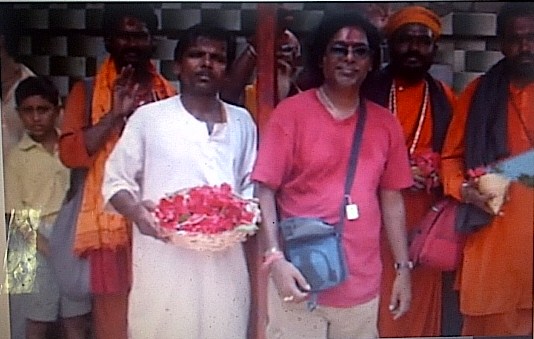



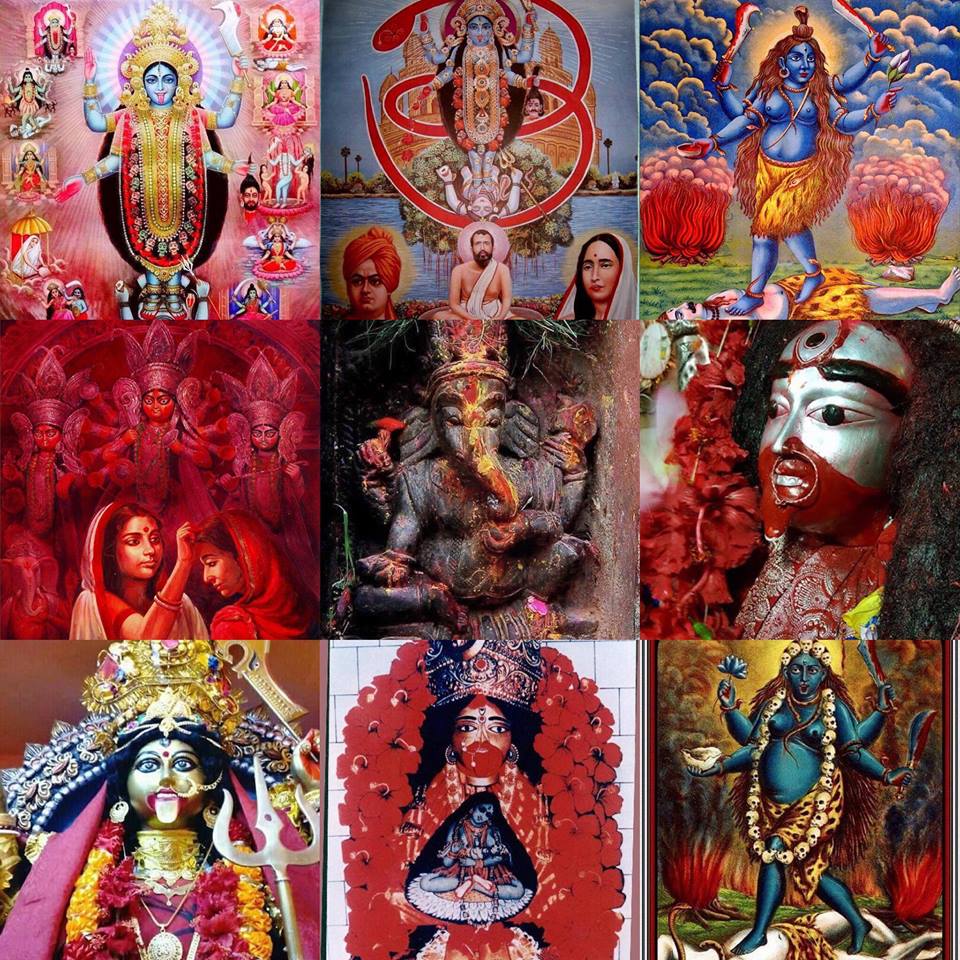
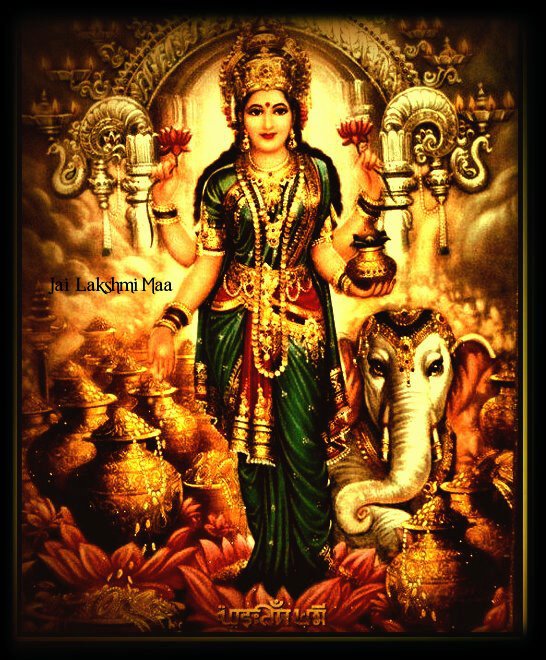

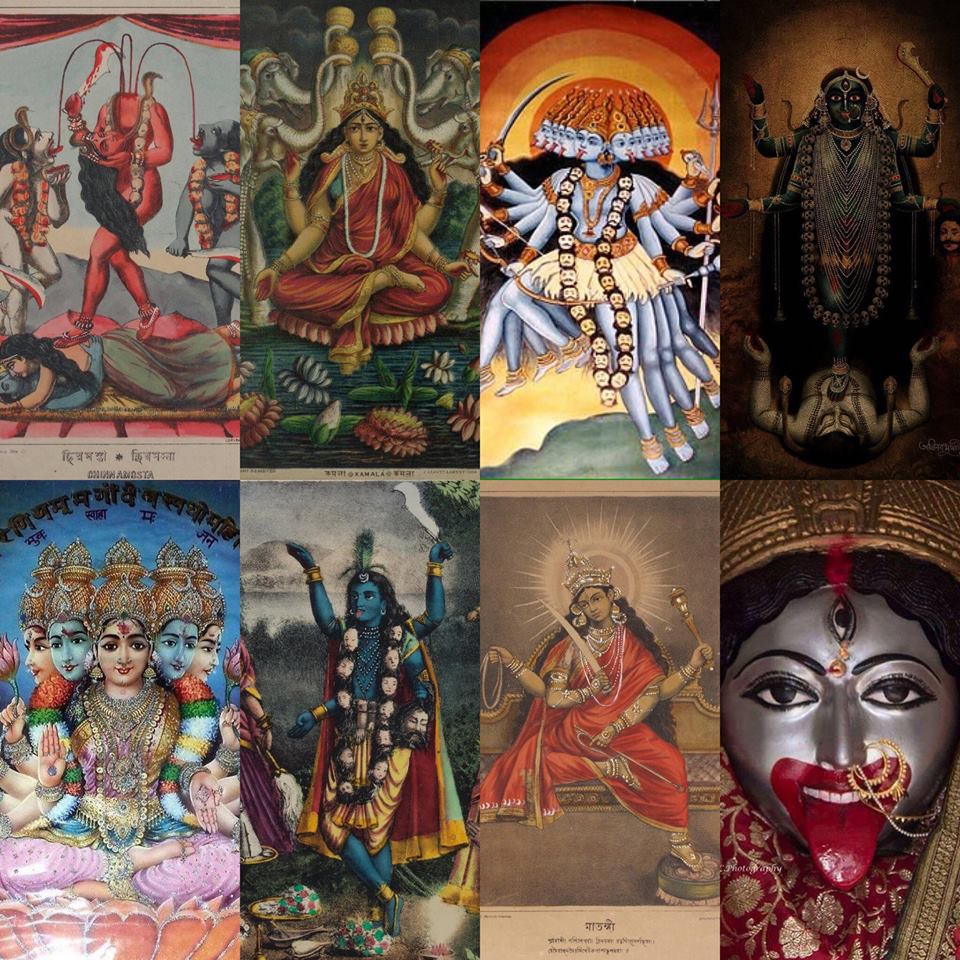
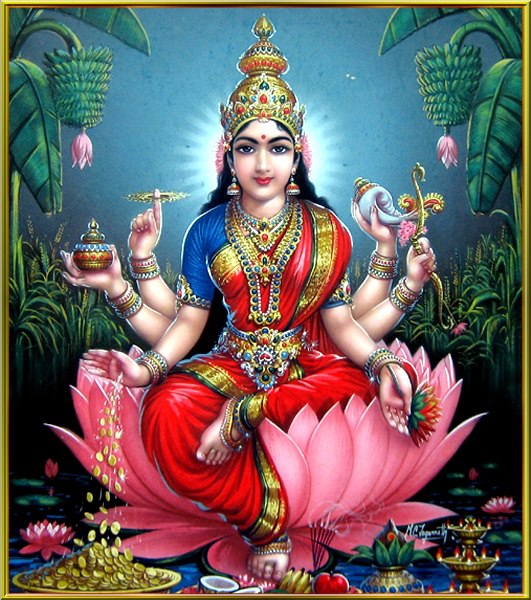



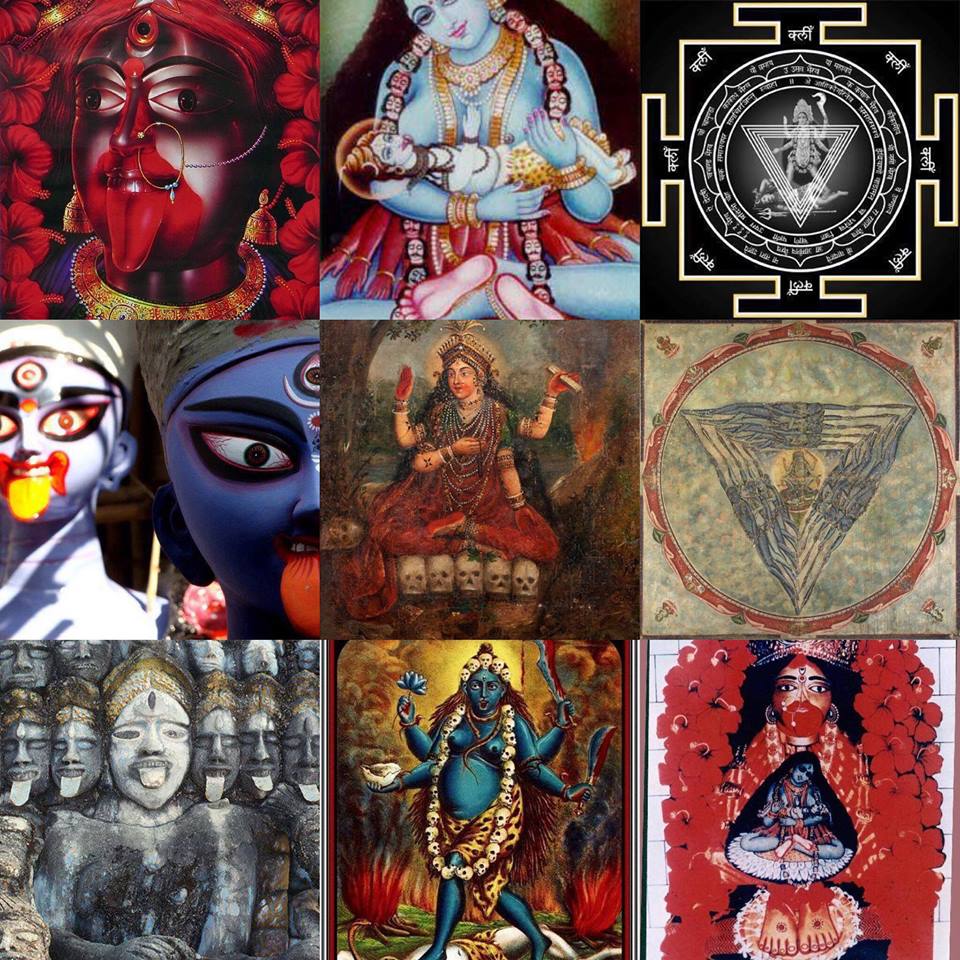


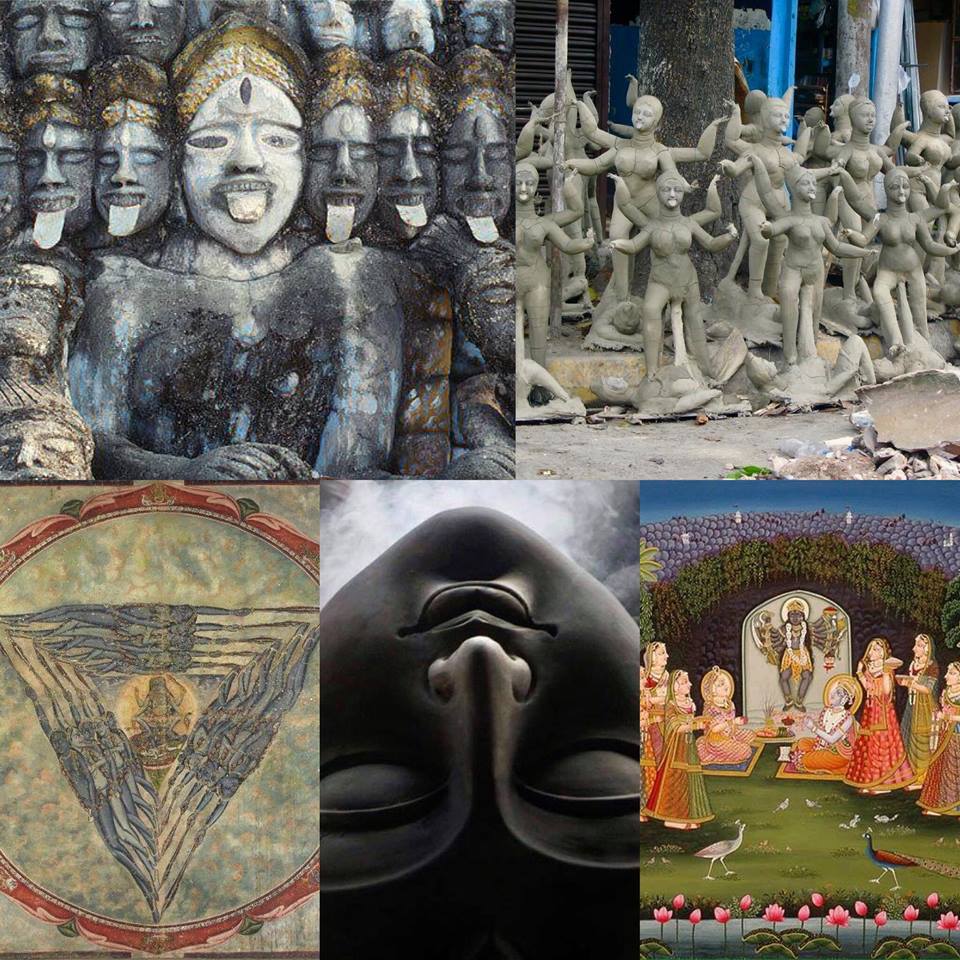







 RSS Feed
RSS Feed























